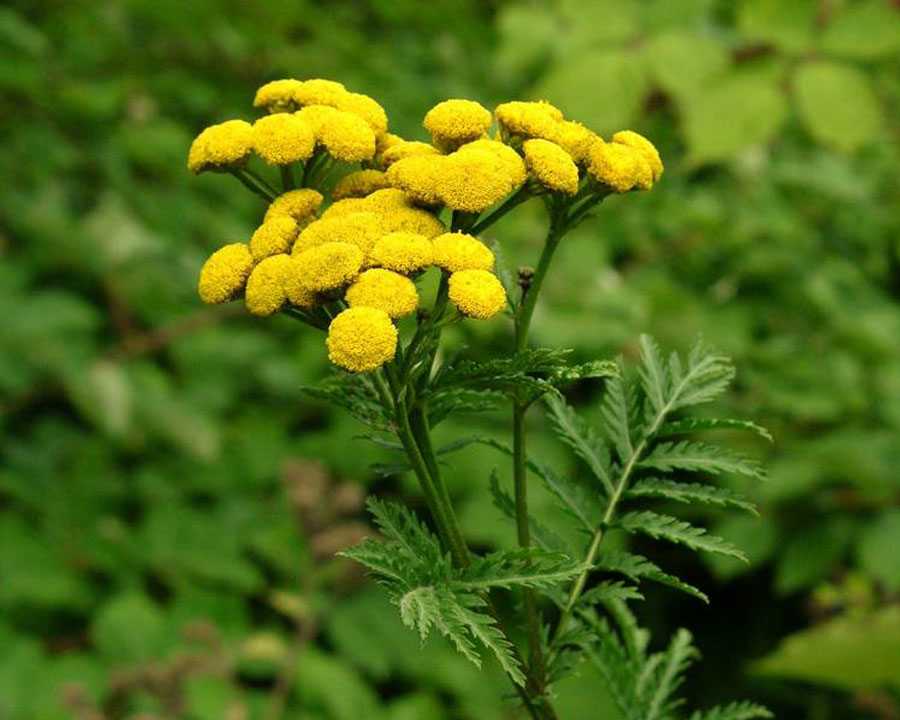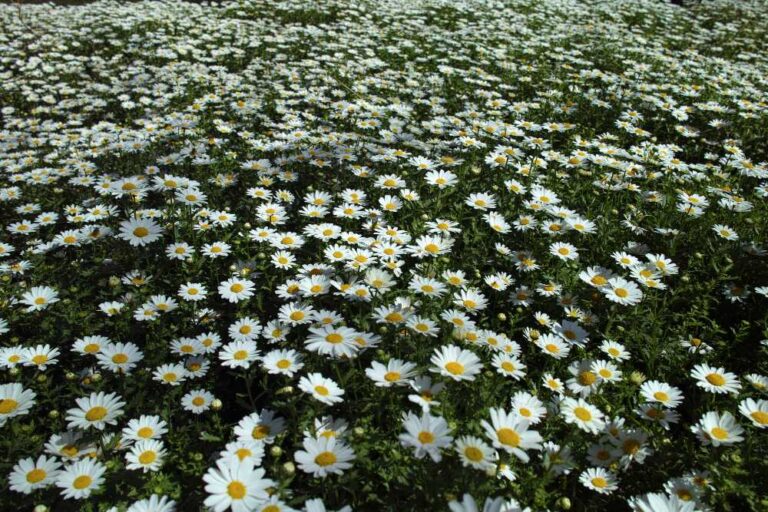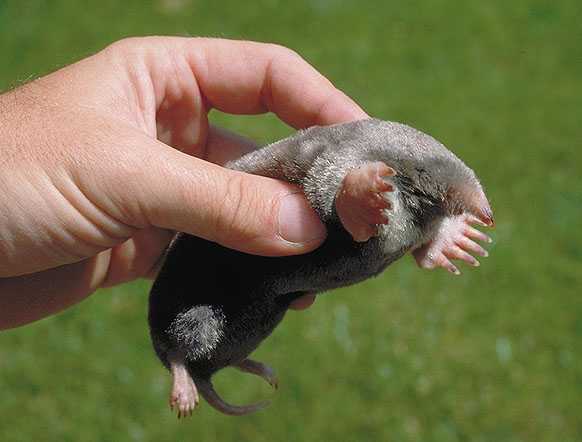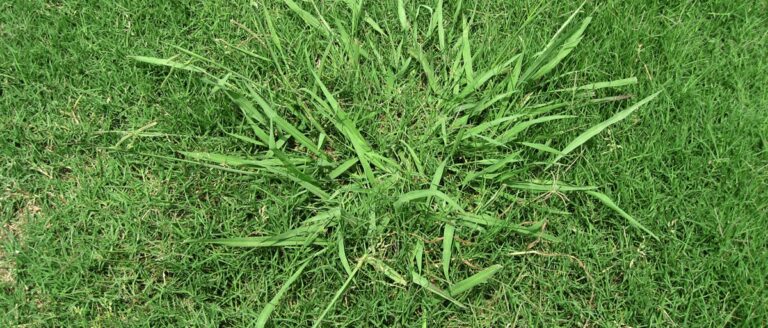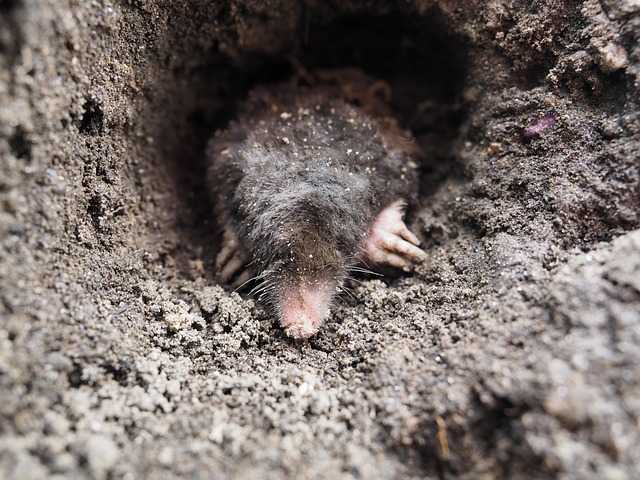35 Weeds with Yellow Flowers: A Gardener’s Guide to Lawn Control
If you are like most homeowners, you probably deal with lots of weeds in your lawn or yard. More often, you’ll find that there are many weeds you can’t categorize and do not know whether they are invasive, toxic, or even beneficial in any way.
In this article, you’ll learn all there’s to know about the most common weeds with yellow flowers. Most of these weeds tend to grow in nearly any area within your garden, lawn, or yard. Each has its characteristics, whether that’s invasiveness, persistence, or adaptability to various conditions. Keep reading to learn more about these weeds and how you can effectively control them.
1. Golden Clover
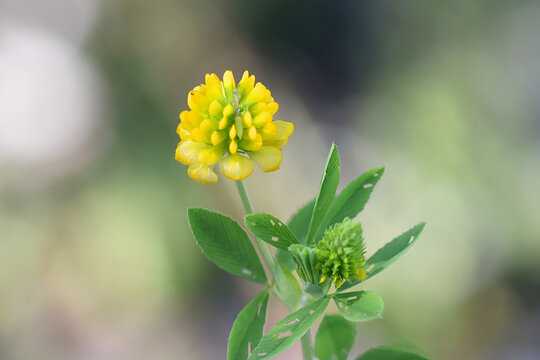
This is an herbaceous broadleaf weed that bears yellow flowers once mature. It’s often found in meadows and frequently visited by the bumble bees. While it can be a disadvantage when it encroaches on yards, it possesses a redeeming quality: its nitrogen-fixing properties. This means that this weed can enrich the soil, making it more fertile for other plants. Gold Clover has a self-supporting growth form, and it’s relatively easier to manage. You can use a weed killer to control this weed or choose to uproot them manually if your lawn isn’t extensive.
2. Spanish Broom
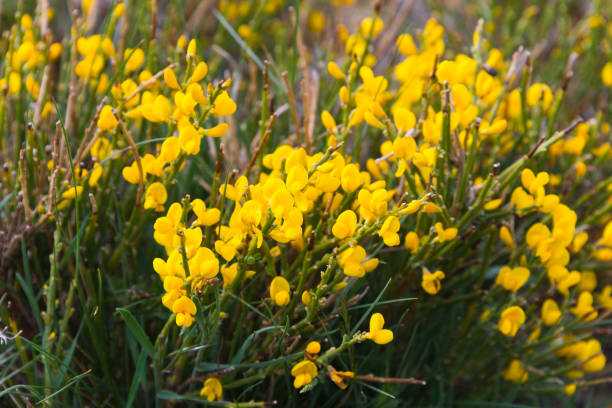
The Spanish Broom is an evergreen shrub with green stems and irregularly shaped yellow flowers. It’s a perennial weed that’s invasive and notorious for crowding out native plants. The weed remains leafless at most times throughout the year, and its rapid spread can disrupt your lawn or garden. This is one of the weeds with yellow flowers that are toxic to humans. Its seeds are poisonous when ingested (it can cause nausea and irritation) but not life-threatening. Herbicide and mechanical control are effective in controlling this weed.
3. Yellow Toadflax

Also known as common toadflax or wild snapdragon, this weed belongs to the Weed Class C and is native to Asia and Europe. It’s not known to be toxic but can be invasive, especially in cultivated fields. The weed’s stems are unbranched, and the flowers are yellow, often crowded with orange throats. Yellow toadflax reproduces by seeds and is found in various habitats, including the edges of fields, meadows, and wastelands. The best way to control this weed is by regular mechanical control, beginning in early summer.
4. Grass-leaved Goldenrod
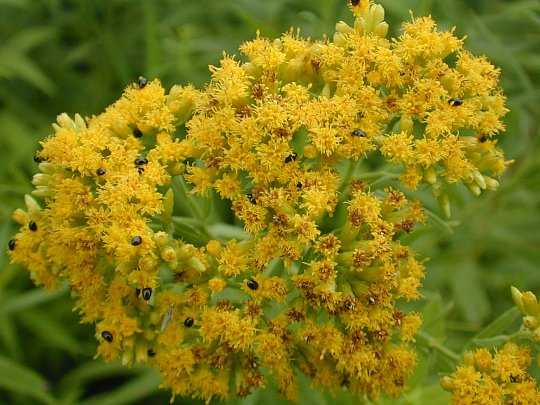
This is an herbaceous perennial weed with dense, flat-topped clusters of yellow flowers at the tips of branches and stems. Grass-leaved Goldenrod is popular in North America and is believed to have been introduced from Europe and Asia. This weed can be advantageous in native plantings as it supports pollinators and provides nectar for bees and butterflies. Unlike most weeds, it doesn’t come with significant disadvantages, but you still want to keep it under control, especially in gardens and yards.
5. Common Groundsel
Native to Northern Africa, Asia, and Europe, the Common Groundsel is, well, common. It’s been nicknamed the “old man in the Spring” and is a problem weed in gardens, cultivated crops, and nurseries. It’s one of the weeds with yellow flowers that is poisonous to humans, horses, and cattle. Common Groundsel contains some chemical components that cause irreversible damage to the liver. When it matures, this weed grows numerous flowerheads with yellow disk flowers. You can use herbicides or mechanical ways to control this weed effectively.
6. Goldenrod
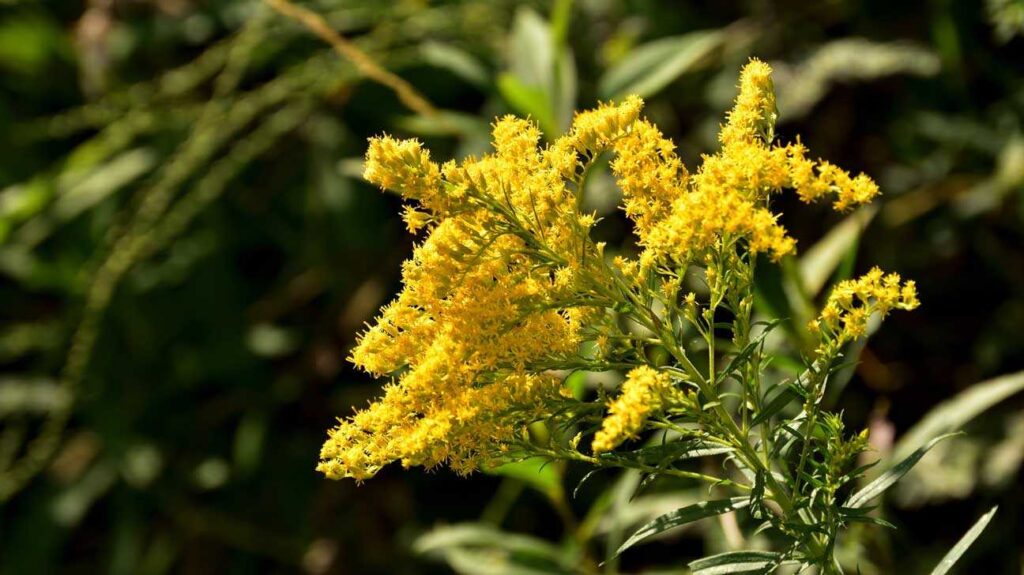
Often misattributed as a cause of hay fever (a title rightfully belonging to ragweed), Goldenrod is a beneficial plant that’s still considered a weed in several parts of the world. It’s a boon to pollinators, attracting bees and butterflies to your garden. They are perennials and typically single-stemmed. Goldenrod thrive in moist environments but are quite intolerant to excessive shade. It’s best to get rid of this plant before it develops seeds since it has very prolific seed production.
7. Creeping Buttercup
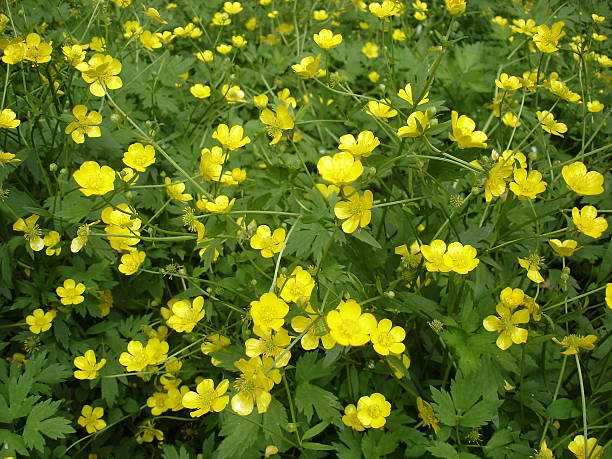
This is a low-growing weed commonly found in pastures, natural wetlands, and farmlands. Its stems and leaves are hairy, and it produces yellow flowers with up to 10 petals. Creeping Buttercup reproduces by seed as well as vegetatively via branching stolons. The weed’s competitive growth is known to deplete nutrients such as potassium from the soil and can have huge impacts on the surrounding plants. Creeping Buttercup tolerates wet soils; hence, it can be a headache in well-watered lawns. The best way to control the spread of this weed is by digging them out manually or using the appropriate herbicides such as glyphosate.
8. Black Medic
Found in Southern Canada and the US, Black Medic is a prostrate broadleaf weed native to Europe. It’s common in gardens, lawns, and waste areas, especially during summer and winter. Besides being nitrogen-fixing, Black Medic doesn’t offer any more tangible benefits, plus its deep taproot makes it a challenging weed to remove. The best way to get rid of this weed is to remove it mechanically or manually when the soil is moist.
9. John’s Wort
Also known as tipton weed or common goatweed, St. John’s wort is native to Northern Africa, Asia, and Europe. This upright perennial weed grows up to 2.5 feet in height and has deep tap roots. It spreads easily to new sites and is known to be toxic to both humans and livestock. St. John’s worth can be confused with weeds such as tansy ragwort and common tansy. The best way to control this weed is through mechanical, herbicide, and cultural control.
10. Sticky Willy (Galium aparine)
Sticky Willy, also known as Cleavers, is a member of the Galium genus and boasts small, yellowish-green flowers. It often finds itself on the wrong side of the garden fence and is widely considered a weed in both gardens and agricultural fields. Sticky Willy is native to Europe, North America, Britain, and Asia. Its clingy nature, thanks to tiny hooked hairs on the stems and leaves, has earned it the “sticky” nickname. You can control this weed using mechanical ways or by using herbicides.
11. Dyer’s Woad (Isatis tinctoria)
Dyer’s Woad, donning small yellow flowers, is an aggressive Class A weed that has allelopathic properties. This weed is a short-lived perennial that grows up to 4 feet tall. It has basal leaves, and the stems are branched toward their tips. Dyer woad often establishes itself in rocky soils and is common in pastures and open fields. One of the practical ways of controlling this weed is by hand pulling or digging it out.
12. Bitterweed (Helenium amarum)
Bitterweed, adorned with bright yellow flowers, is a familiar sight in various parts of the world. It’s typically seen as a weed in pastures and rangelands due to its invasive nature. They have narrow, needle-like leaves and are fragrant when crushed. And while this weed isn’t considered poisonous, it can cause intestinal irritation if ingested in large quantities. Bitterweed is best controlled with herbicides. You can also choose to manually uproot them before they mature with seeds.
13. Skeletonweed
Also known as Rush Skeletonweed, this weed is super invasive and is common in irrigated lands. Its prolific spread outcompetes native plants, leading to ecological imbalances in its new habitats. The weed is perennial and can grow up to 5 feet tall. Its long taproot system can grow up to seven feet deep, and the plant is spread by seed. The best way to control it, therefore, is to uproot it before it matures. You can also use biological control methods such as the application of the rush skeletonweed rust fungus.
14. Black-Eyed Susan
This is a popular wildflower native to most parts of Europe, North America, Asia, and Australia. The Black-Eyed Susan is a welcome guest in gardens and natural landscapes (great for pollinators) but is considered a weed in lawns and yards. Since it’s resilient and fast-growing, controlling it can be quite a challenge. The weed can grow up to 5 meters in height and can be a prolific seeder in warmer areas. Mechanical control is the best way to get rid of this weed.
15. Oxalis stricta
Also known as Yellow Woodsorrel, Oxalis Stricta is a prolific garden intruder commonly found in gardens, sidewalks, and lawns. Its ability to reproduce via bulbs and seeds makes it a persistent weed. If this weed has invaded your yard, it’s best to carefully remove them mechanically. Otherwise, you can use systemic weed killers such as glyphosate. You should, however, be careful when handling such herbicides as they can have an impact on your health as well as the other nearby plants.
16. Yellow Lantana
This is a perennial shrub that’s hardy and drought-tolerant. While Yellow Lantana can add vibrant color to gardens, it’s typically considered a weed. It often pops up in well-maintained landscapes and can be hard to get rid of. Yellow Lantana is native to Central America, Mexico, and the tropical South America. This plant is toxic to animals and can be quite invasive in cultivated fields. The best way to control Yellow Lantana is to use the right herbicides.
17. Ragwort
Ragwort is one of the weeds that’s labeled as toxic to livestock and humans. It’s native to Asia, Northern Africa, and Europe and is known to contain high amounts of alkaloids in the roots, flowers, roots, and stems. Its beautiful yellow blooms produce seeds responsible for reproduction. The plant can also reproduce vegetatively and often grows in pastures, roadsides, open fields, and even gardens. Small infestations of ragwort can be controlled manually; however, large infestations may require the use of appropriate herbicides.
18. Wintercress
Common in gardens and open fields in Northeastern America, Wintercress is an herbaceous biennial plant largely considered a weed. Some varieties of this plant have medicinal properties and are used to treat wounds and digestive health issues. Most Wintercress occurring in fields and gardens are not necessarily invasive but can grow fast under the right conditions, outcompeting pasture, grasses, and other crops. Wintercress is easily controlled using mechanical or manual techniques.
19. Bird’s Foot Trefoil
Valued for its ability to control erosion, Bird’s Foot Trefoil is considered beneficial in ecological restoration. It’s a low-growing broadleaf weed that’s perennial. This plant is salt and drought-tolerant and germinates mainly from the seed in the spring. In most regions, this weed grows in the fields or rangelands. However, it can grow in the garden or yards and can become quite invasive. The best way to deal with Bird’s Foot Trefoil is to maintain a healthy lawn and to hand-pull or dig them out before they spread.
20. Sow Thistle
This is a perennial weed found in various environments. It’s classified as a noxious weed and native to Asia, Europe, and Northern Africa. The sow thistle is deep-rooted and has hollow stems with some milky juice. The plant can grow up to 6 feet tall, and once mature, it produces bright yellow flowerheads. This weed is often confused with the common sow thistle and the common dandelion. And while sow thistle isn’t common in well-manicured lawns, it may grow in your garden or open fields. One of the best ways to get rid of this plant is to uproot it manually.
21. Creeping Cinquefoil
This is a herbaceous perennial that’s a familiar face in lawns but doesn’t offer any particular benefits. It’s native to the UK and is frequently visited by bees and butterflies, thanks to beautiful yellow and purple flowers. Creeping cinquefoil is common in grasslands, roadsides, hedgebanks, and in lawns. Its low-growing nature and ease of spreading via rooting runners make it a nuisance in most lawns. Besides being invasive, it’s also well adapted to most soil conditions and has a deep taproot that makes it thrive even during dryer seasons. If you cannot manually uproot this weed due to a large infestation, it’s best to apply the right herbicides.
22. Yellow Hawkweed
This weed resembles the common dandelions in appearance but is more invasive and difficult to control. Yellow hawkweed is native to Europe but is quite common in most parts of the world. The weed is perennial and mostly spread by seeds, rhizomes, and stolons. Its flowers emerge from mid-May to late July and often set the seeds by August. Yellow Hawkweed thrives in disturbed areas such as pastures and roadsides but can also find its way into your lawn or garden. Due to their invasive nature, yellow hawkweed is best controlled using herbicides.
23. Coltsfoot
Native to Asia and some parts of Europe, Coltsfoot is one of the few weeds with yellow flowers that has some documented health benefits. Its round, dandelion-like flower heads, and hoof-shaped leaves can be a nuisance in lawns, especially in summer and spring. Controlling the coltsfoot is a bit difficult due to the fact that it has extensive rhizomes that can quickly break off once the soil is disturbed. This weed thrives in shaded and disturbed habitats. Some of the health benefits of this plant include the treatment of cough, asthma, and sore throat. Coltsfoot is best controlled using mechanical ways, which include digging out all the rhizomes to prevent re-growth.
24. Yellow Bedstraw (Galium verum)
Yellow Bedstraw, also known as Lady’s Bedstraw, is a long-lived wildflower with clusters of tiny yellow flowers. Found in meadows and along roadsides, it brings a touch of nature’s beauty to these habitats. However, it is considered a weed in lawns, yards, and cultivated fields. This plant is native to Europe and Asia but has spread to several parts of the world. Yellow Bedstraw’s flowers were once used to coagulate milk during cheese manufacturing and to make dyes. In small numbers, this weed is relatively easy to control, mostly by uprooting the whole plant manually.
25. Oxeye Daisy
Commonly found in lawns, Oxeye Daisy is not particularly disadvantageous, but it doesn’t offer substantial benefits either. Its white petals and sunny yellow centers create a classic wildflower appearance, but it’s often viewed as just another common yard weed. As a perennial herb, this weed can easily be controlled manually by uprooting it before it matures. It’s common in pastures, yards, and croplands. It’s not harmful to cattle or humans, but when consumed by cattle, it can give milk an off-flavor.
26. Yellow Rocket
This weed belongs to the mustard family and doesn’t have the best reputation among gardeners. It normally grows in lawns, pastures, and nurseries, often in fall; hence, it can be easily targeted in early winter. This plant can be invasive in some regions and could spread rapidly, outcompeting native flora. While its yellow flowers and thick dark green leaves are visually appealing, its aggressive nature often outweighs its ornamental value.
27. Common Tansy
This is a Class C weed native to Europe and Asia. It’s an aromatic herbaceous perennial with fern-like foliage common in gardens and lawn edges. Its feathery leaves and yellow button-like flowers may have a certain charm, but this plant’s tendency to crowd out other species puts it in the weeds category for many gardeners. This plant can be toxic to animals when ingested in large quantities; however, its strong odor makes it less likely that any animal would consume it. Mechanical control is one of the best ways to get rid of this weed.
28. Dandelion
This is one of the most popular plants known for its dual personality. While it’s appreciated for its medicinal and culinary uses, it can be a persistent nuisance in well-manicured lawns. Dandelion has distinctive bright yellow flowers and seeds and is considered a survival and highly nutritious plant rich in vitamins and minerals. If you want to get rid of this plant in your lawn or yard, make sure to dig out the taproot. It’s best also to remove the plant before it matures and develops seeds.
29. Mouse-Ear Hawkweed
This is a low-growing perennial weed with fuzzy leaves and yellow flowers. It’s known to displace other plants, especially in pasture land and lawns. The weed reproduces by rhizomes, stolons, and seeds and can be difficult to control once it has been fully established. All parts of the mouse-ear hawkweed are toxic, so it shouldn’t be ingested in any form. One of the best ways to control the spread of this weed is to get rid of the root system entirely, mostly through mechanical means.
30. Garden Loosestrife
Found in damp places such as ditches, stream banks, and wet meadows, Garden Loosestrife was first introduced in Europe and North America as an ornamental. Fast-forward to today, this plant is now a highly invasive weed. Garden Loosestrife reproduces by seed and vegetatively and can grow up to 6 feet tall. It’s common in wetlands but can also grow aggressively in well-watered gardens and poorly maintained lawns. This weed is best controlled manually by digging them out.
31. Wild Parsnip
This is one of the plants native to Europe that were first cultivated as root vegetables before they escaped cultivation to become invasive weeds. Wild parsnip is quite adaptable, thriving in various soil conditions. Its yellow umbrella-shaped flower clusters may add a wild touch to the landscape, but its propensity to spread rapidly makes it more of a nuisance in most cultivated fields, yards, and lawns. One of the most effective ways of getting rid of wild parsnip is to spray with systemic herbicides.
32. Wild Radish
This is a highly competitive plant commonly found in North America. It can grow up to 6 feet tall and features some lobed leaves and small yellow flowers. This summer or winter annual spreads faster and is known to reduce crop yield by up to 90%. It’s common in pastures, poorly-maintained lawns and gardens. Wild radish has a high seed reproduction rate; hence, it’s crucial to control them before they mature. Once it has grown in large numbers, it’s best to use herbicides often to get rid of this weed.
33. Japanese Knotweed
Commonly found in North America, the UK, and some parts of Oceania, Japanese Knotweed originated in Japan, hence the name. It was first introduced in various parts of the world as an ornamental, but it eventually became a weed known to form very dense and invasive monocultures. It’s also said to have detrimental impacts on local infrastructure, such as railways and buildings, as well as native biodiversity. It’s best to manually remove these weeds before they spread further.
34. Marsh Yellowcress
This is a tap-rooted, biennial weed belonging to the mustard family. It has small yellow flowers found in the terminal cluster. Marsh yellowcress reproduces by seeds, root fragments, and rhizomes. It can grow up to three feet tall, and once it’s fully established, it can be not easy to control. This weed is common in pasture land and poorly maintained lawns. The best control method is using non-selective herbicides.
35. Lesser Celandine
Native to Northern Africa, Asia, and Europe, lesser celandine is a low-growing herbaceous perennial with dark leaves and bright yellow flowers. It grows in damp areas, mostly along river banks, wetlands, and flood plains. However, it can also grow in lawns and open fields and can be difficult to get rid of. You want to manually uproot this weed before it spreads, as that would mean regularly applying herbicides to fully control its spread.
Make Your Lawn Weed-Free
Having explored all the above weeds, it’s fair to say that most of them can grow in your yard or lawn, and it takes proper weed control strategies to prevent them from growing in the first place. While most weeds with yellow flowers are visually attractive, you want to be careful as some are known to be toxic, and others are very hard to control once they get into your yard.
